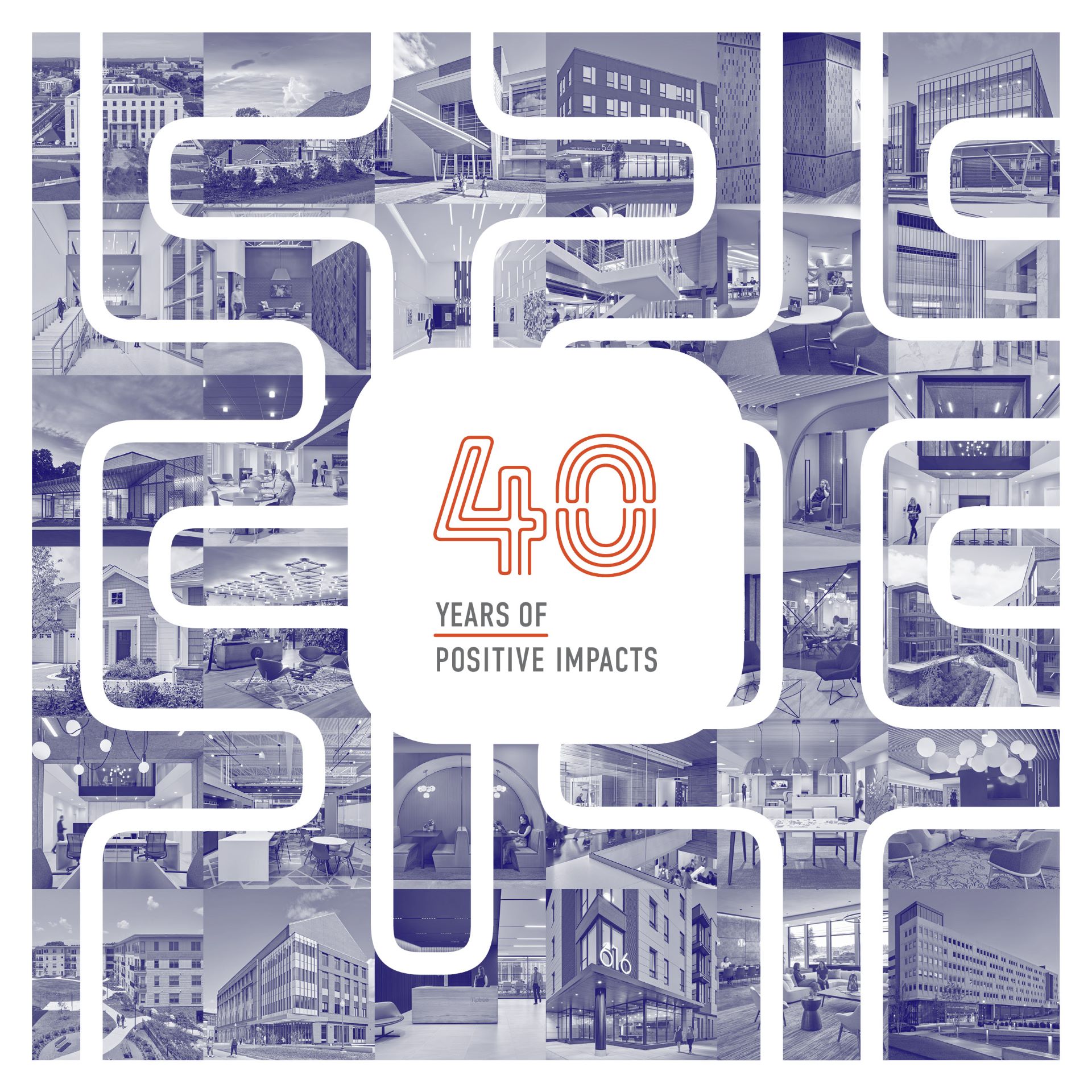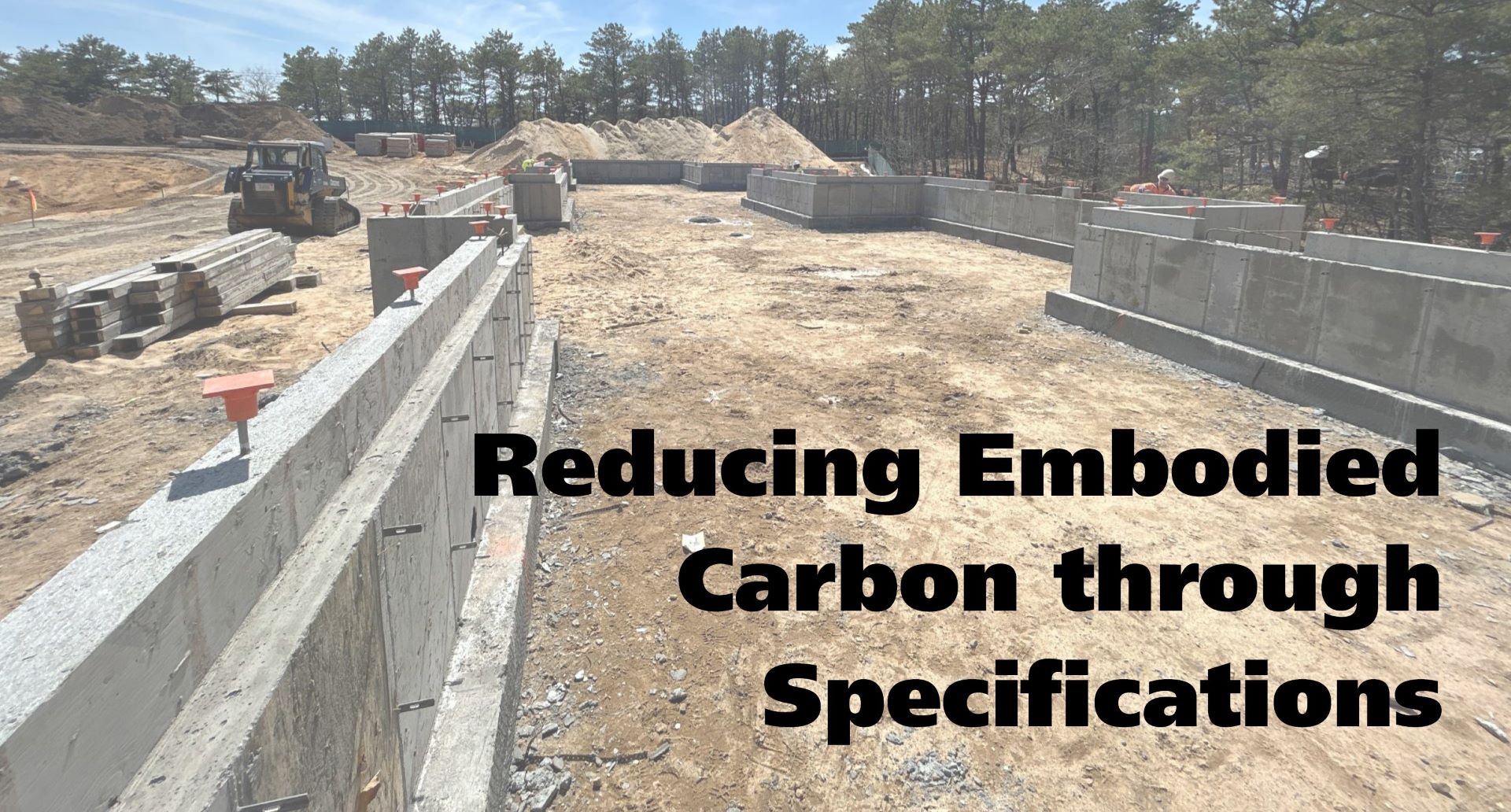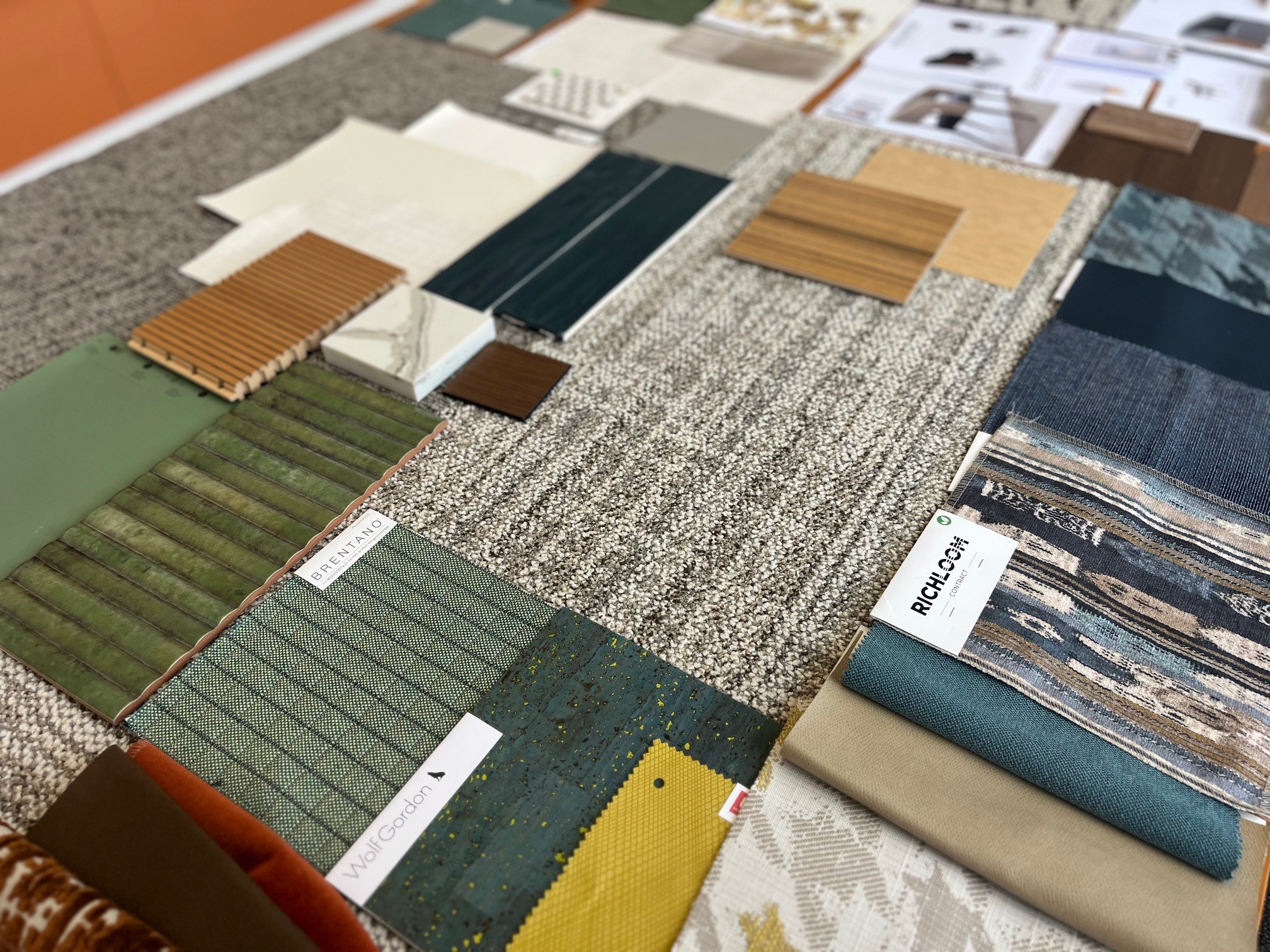As an interior design professional, I love nothing better than a great space. But the more I read and learn, I am convinced there is much more we can do. That was my motivation for pursuing accreditation and certification in Evidence-Based Design (EBD) from the Center for Healthcare Design. The program teaches how to apply evidence based on credible, curated research to planning and design through construction “in settings that contribute to health, safety and well-being.”
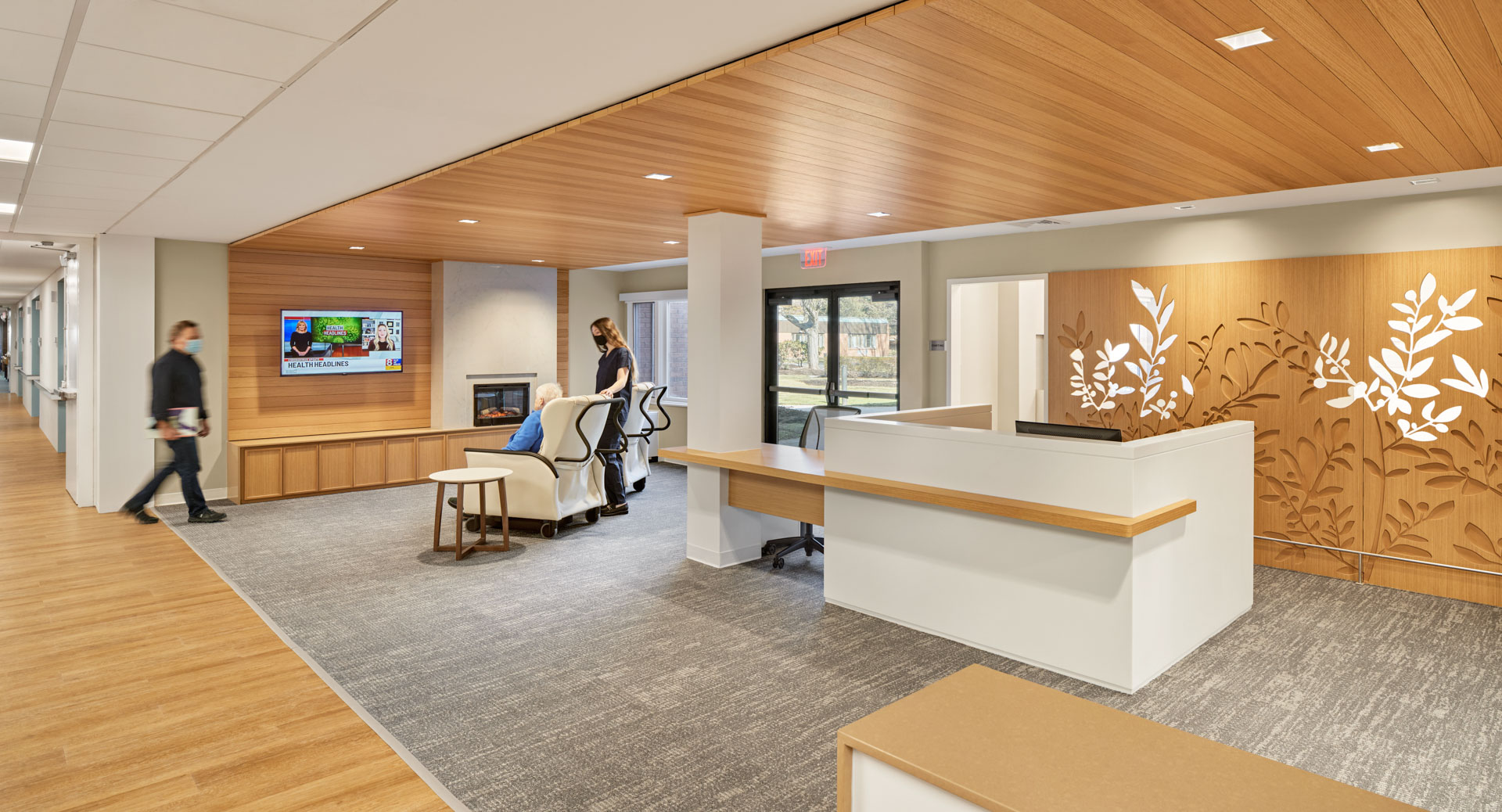
Designers removed walls to capture light and outdoor views, and warm wood finishes were selected for Hartford Healthcare’s Jefferson House renovation.
In health care, the evolution of technology and scientific research on diseases such as Alzheimer’s have major impacts on treatment and care. Traditional models no longer apply, whether it’s in hospitals, assisted living, memory care and more. There is so much to learn about the psychology of design in these settings.
Careful research and proven data provide baselines from which to explore. Designers bring creativity and innovation to the research, resulting in unique solutions for each project.
Air, water, food and safety are basic needs. But to thrive, we need more: mobility, thermal and visual comfort, balanced light exposure, a sense of community, and rest. Designers must be empathic to these extra needs to make smart decisions about natural light, access to fresh air, wayfinding, room placement and floorplans.
The EBD process begins with defining project goals and objectives. For example, if a facility has staff calling in sick 15 percent of the time, a project goal might be to reduce that metric to 8 percent. If a facility has a high fall rate among clients, a goal would be to define what changes or technologies might alter that outcome. Stakeholders are engaged early, as they help articulate their day-to-day challenges and most often are aware of research and trends.
Some examples:
Science tells us that biophilic design, connecting to nature, is important in healthcare. Exposure to daylight helps reinforce the body’s circadian rhythm (natural sleep cycle). This is especially helpful for seniors wishing to stay active. For those with memory care issues, exposure to daylight is critical. A more active day can mean fewer issues with sundowning in the late afternoon and a more restful sleep at night. Views of and access to the outdoors contribute to lowered blood pressure and heart rate, improved engagement, and a greater sense of well-being.
For memory care, design can address cognitive clarity, simplicity, and ease of way-finding. By dramatically reducing the amount of detail in an environment and reducing the stimulus value of the environment, a resident’s environment is more understandable, familiar and soothing.
Something as simple as adding lighting to hand rails creates better contrast for residents’ safety) and pleasant illumination to the corridor. This feature was so well-received in a recent innovation, the client asked that it be incorporated in another project.
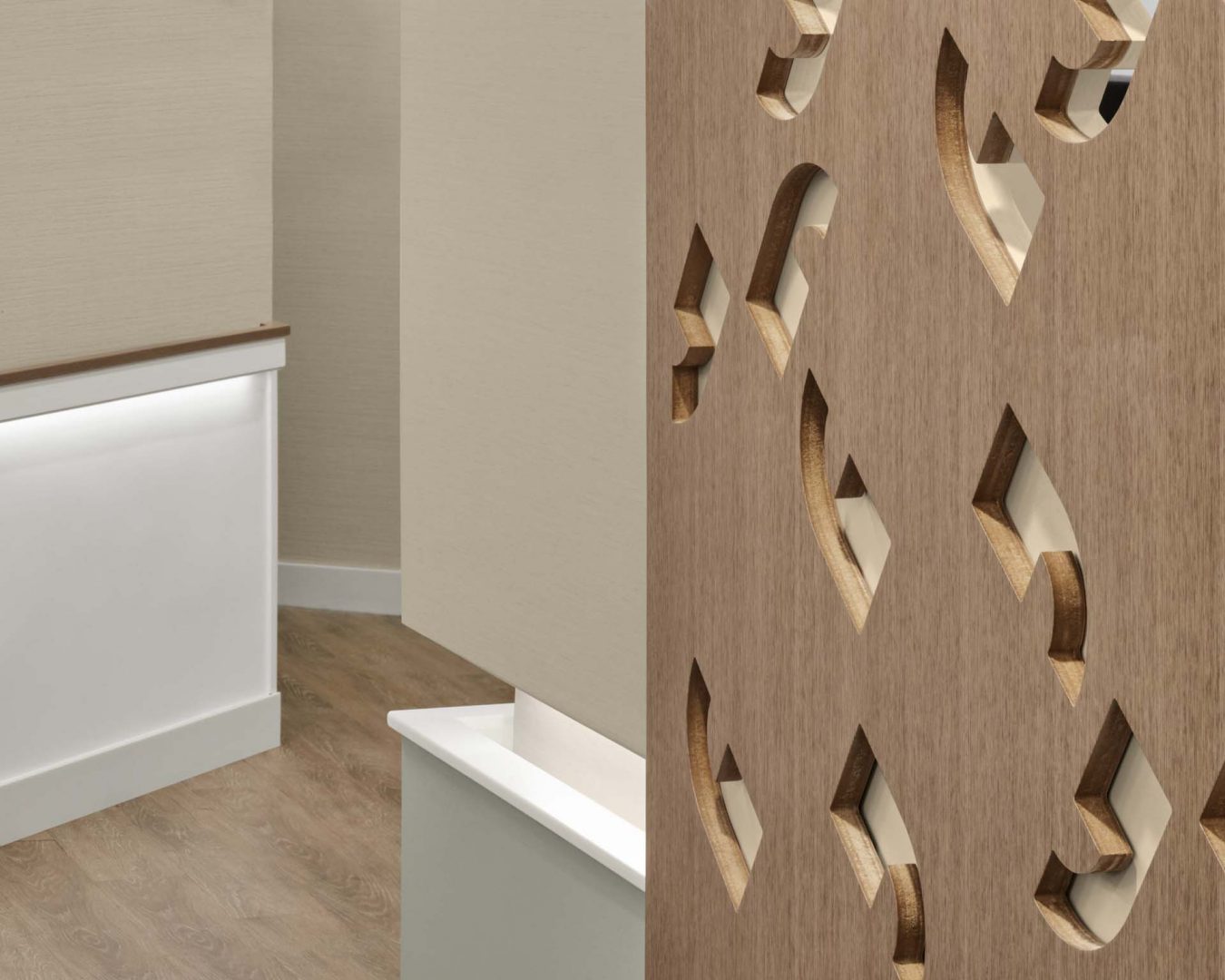
Custom lit handrails create better contrast for residents at Southington Care Center.
Independent living facilities and Life Plan Communities also benefit from EBD. In an anticipated refresh of common amenities at Kendal on the Hudson, residents will enjoy better access to a terrace for functions like gardening and outdoor fitness. A new community room will take advantage of river views; a gathering room will be an auditorium equipped with a sophisticated hearing system and enhanced screen views for pull-down projection. I-pad-like technology will enable residents to order and pick up food at a grab-and-go counter. An exhibition kitchen will promote community engagement.
Evidence-based design promotes creativity and innovation. It challenges the status-quo and informs decision-making and design. Since achieving certification, I am convinced that the EBD process can be applied to any design discipline. Design should elevate a space and improve lives using proven data to lead decision-making that will result in the best outcomes we can imagine for those who use our spaces. This is Amenta Emma’s goal.


